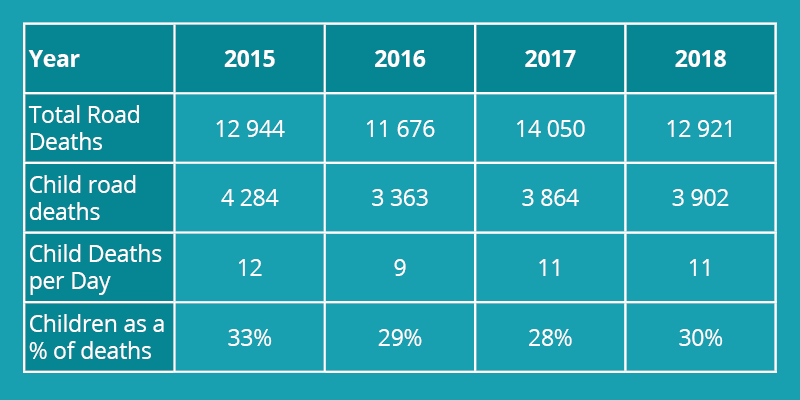NATIONAL NEWS - In 2018, 1576 children under the age of 14 died as passengers in vehicles.
Most of these deaths could have been prevented if child restraints or seat belts were used. This is 157 children deaths more than the year before.
Although the RTMC data does not discern between public and private transport, it is Wheel Well’s opinion that the increase in deaths is due to the fact that our children in public transport, and specifically school transport, are not protected and do not enjoy the same safety rights as children in private transport.
During Child Passenger Safety Awareness Week, we will highlight the plight of our children as passengers.
Peggie states: “Children do not drive vehicles, we do. It is up to us to keep them safe“.
The National Road Traffic Act clearly states that children under the age of 3 must be in a child restraint. Children over 3 and under 14 or 1.5m tall, must be in a car seat if one is available. If no car seat is available, the children must sit on a vehicle seat secured in a seat belt.
The Act also states that the driver is responsible for the safety of all the passengers. It is a concern that transport for reward is excluded from this regulation.
An even bigger concern is that the loading of children in vehicles has not been addressed as yet. For the purposes of counting persons for loading, children under 3 do not count, 2 children between the age of 3 and 6 counts as 1 person and 3 children between 6 and 14 counts as 2 persons.
 Statistics.
Statistics.
Vehicle seat belts and car seats are designed to prevent death and reduce injuries to a treatable level by doing 3 things:
- Prevent a person, or child, from being flung out of the vehicle
- Prevent a person, or child, from bashing into the interior of the vehicle and other occupants of the vehicle
- Seat belts and car seats help the body “ride down” the forces of a crash.
 Five point test.
Five point test.
Children who are not restrained typically die from blunt force trauma to the head or multiple blunt force trauma to the body. Child restraints are specifically designed to prevent these injuries and protect the vulnerable head, spine and vital organs. Seat belts are designed for an adult of at least 1.5m tall and cannot provide the same safety benefits for children that are smaller in stature.
A child is ready to ride with a seat belt only when they can say yes to all of these 5 questions:
- Can you sit with your back against the backrest of the vehicle?
- Can your knees bend over the front of the seat?
- Does the shoulder belt rest on the middle of your shoulder?
- Does the lap belt fit low over the top of your legs?
- Can you sit like this for the whole ride?
Wheel Well, through the Car Seats for Kids campaign and the wonderful support they enjoy from the community, has made it possible that over 8 500 children benefited from car seats, used and new. You can assist Wheel Well in keeping our children safe by donating your used car seats to them. Car seats can do so much better than gathering dust, they can go on to keep several children safe. Car seats can be dropped off at any InspectaCar or Renault dealership and SkyNet branches nationwide.
For more information on how to keep children safe as passengers, parents are most welcome to be in contact with Wheel Well. Let us work together towards preventing our children from serious harm and injury in crashes.
Peggie can be contacted on 072 385 7121 or peggie@wheelwell.org.za Web page: https://www.wheelwell.org.za/
Wheel Well is the only NGO that focuses exclusively on children in road safety and was founded in 2012 by Peggie. Wheel Well strives to be the most visible and audible change agents for children as passengers in private and public transport as well as for children as pedestrians.
See comparison data from RTMC here.
'We bring you the latest Garden Route, Hessequa, Karoo news'
















